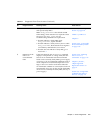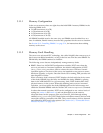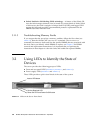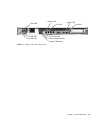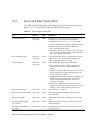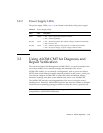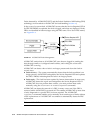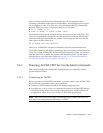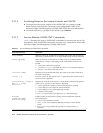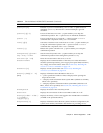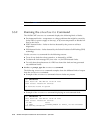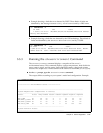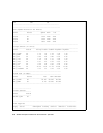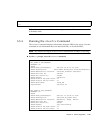
3-12 SPARC Enterprise T1000 Server Service Manual • April 2007
Faults detected by ALOM CMT, POST, and the Solaris Predictive Self-Healing (PSH)
technology are forwarded to ALOM CMT for fault handling (
FIGURE 3-4).
In the event of a system fault, ALOM CMT ensures that the Service Required LED is
lit, FRU ID PROMs are updated, the fault is logged, and alerts are displayed. Faulty
FRUs are identified in fault messages using the FRU name. For a list of FRU names,
see Appendix A.
FIGURE 3-4 ALOM CMT Fault Management
ALOM CMT sends alerts to all ALOM CMT users that are logged in, sending the
alert through email to a configured email address, and writing the event to the
ALOM CMT event log.
ALOM CMT can detect when a fault is no longer present and clears the fault in
several ways:
■ Fault recovery – The system automatically detects that the fault condition is no
longer present. ALOM CMT extinguishes the Service Required LED and updates
the FRU’s PROM, indicating that the fault is no longer present.
■ Fault repair – The fault has been repaired by human intervention. In most cases,
ALOM CMT detects the repair and extinguishes the Service Required LED. If
ALOM CMT does not perform these actions, you must perform these tasks
manually using the clearfault or enablecomponent commands.
ALOM CMT can detect the removal of a FRU, in many cases even if the FRU is
removed while ALOM CMT is powered off. This enables ALOM CMT to know that
a fault, diagnosed to a specific FRU, has been repaired. The ALOM CMT
clearfault command enables you to manually clear certain types of faults without
a FRU replacement or if ALOM CMT was unable to automatically detect the FRU
replacement.
Note – ALOM CMT does not automatically detect hard drive replacement.
Service Required LED
FRU LEDs
FRUID PROMs
Logs
Alerts




